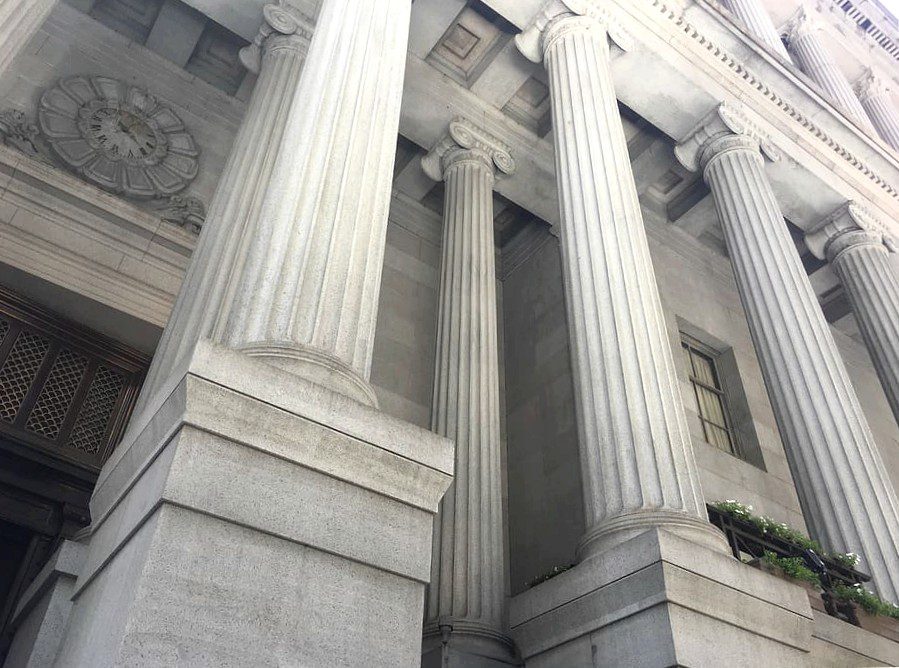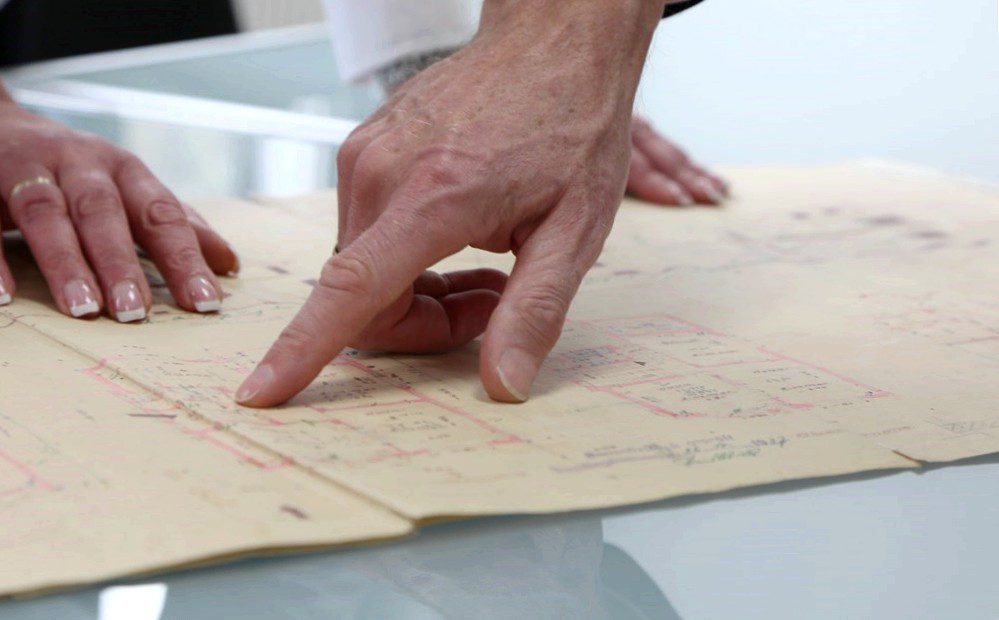
Berlin’s architecture is shaped by building codes of the past. Over the centuries, various governments and administrations have issued their own regulations for buildings. These have taken into account not only technical but also aesthetic aspects and thus shaped the cityscape. The focus is primarily on the regulations of the 19. The city’s urban sprawl in the late nineteenth and early twentieth centuries, a result of industrialization and increasing population density.
In the center of Berlin you will find many buildings, which refer to the past building regulations through their architecture. The Wilhelminian period is particularly present here, but other styles are also represented. However, the influence of the earlier building regulations is particularly evident in the residential districts on the outskirts of the city, where many houses were built in identical styles.
In this study, we want to look specifically at which legislation was formative for Berlin’s cityscape in the past and how it affects today’s architecture. We will focus on the regulations of the Grunderzeit and examine how they influenced the builders of the time and how this imprint is still reflected in buildings today.
Historical building regulations in Berlin
Berlin is considered a city with a rich heritage of building regulations and ordinances. Building codes of the past have helped shape Berlin’s cityscape and give it its special character. Many of the historic building codes are still in place today and dictate how new construction and renovations must be done.
One important regulation that has shaped Berlin’s cityscape is the Berlin building code. This was created in the 19. The building code dates back to the nineteenth century and defined what buildings should look like. For example, streets were to be laid out with a certain width and houses were not to exceed a certain height. Many of the streets and houses in Berlin have been built according to these regulations and have given the cityscape of Berlin its distinctive charm.
Another example of historic building regulations in Berlin is the design of facades. In the 1920s, the city of Berlin stipulated that building facades should be uniform in design. For example, balconies and windows were arranged according to a certain pattern to achieve a uniform appearance. Even today, some districts of Berlin have clear guidelines for the design of facades in order to preserve the historic cityscape.
- An important factor in the implementation of historic building regulations in Berlin is the cooperation between architects and urban planners. You need to familiarize yourself with the current regulations and take them into account when planning new buildings or renovations.
- Berlin’s historic building codes are an important part of the city’s cultural heritage and contribute to Berlin’s identity. They are an adherence to the past and show how building regulations have shaped the cityscape over the centuries.
Building regulations and the cityscape of Berlin
The architecture of a city is determined not only by artistic influences, but also by building regulations. The building regulations that have emerged in the history of Berlin have significantly shaped today’s cityscape. It is therefore not surprising that many historic buildings and districts of Berlin have been preserved to this day. These buildings are not only witnesses of the past, but also an important part of today’s cityscape and the identity of Berlin.
An example of the architectural influence of building regulations on Berlin’s cityscape is the development of the Friedrichshain neighborhood. This part of the city was built in the late 19th century. The building was built in the nineteenth century and was shaped by the building regulations that applied in Berlin at that time. Most of the houses in Friedrichshain are built with similar architecture and are of a similar size. This provides a harmonious and uniform cityscape, which has been preserved to this day.
The concept of Wilhelminian architecture also shaped Berlin’s cityscape. This architecture was created at the end of the 19th century. It was developed in the late nineteenth century and was a response to the growing need for housing in the city. Building codes of the time allowed architects to build multiple stories while still creating a uniform facade. The result was impressive buildings that still characterize Berlin’s cityscape today.
- Building codes affect not only architecture, but also how buildings are used. In the past, for example, many residential buildings in Berlin were built with backyards that were used as common areas. Nowadays, these backyards are often converted into apartments and offices, but they are still an important part of Berlin’s architectural history.
- Another example of the impact of building regulations on Berlin’s cityscape is the preservation of historic buildings. Many old buildings have been replaced by modern structures in the past, but new building codes today often require historic buildings to be preserved. For example, many buildings from the Wilhelminian period are now listed as historic monuments and continue to characterize Berlin’s cityscape.
In summary, it can be said that building regulations play an important role in shaping Berlin’s cityscape. They have influenced the development of architecture and the use of buildings and have thus become part of Berlin’s identity.
Validity of today’s building codes
Building codes in today’s Germany are established by the individual states and regulate the requirements for structures. These are mainly concerned with the safety and usability of the buildings, but also with fire safety and energy efficiency. These regulations are based on current scientific knowledge and technologies.
In contrast, building codes existed in the past that are no longer in effect today. An example of this is Berlin’s cityscape, which was shaped by the building regulations of the 1920s. These regulations governed, among other things, the size and height of the buildings and their distance from each other. This has resulted in characteristic streetscapes and building ensembles that still characterize the cityscape today.
Another example is the architecture of the 1950s, often referred to as “post-war modernism”. Due to the scarcity of money and building materials, the building codes of the time specified functionality and efficiency above all else. However, many buildings from this period are highly controversial today because they are considered ugly and hostile to life.
Overall, it can be seen that the building regulations of the past still have an influence on the cityscape today. While some building regulations are considered timeless and successful, others are long outdated and controversial. It is therefore important to constantly review and, if necessary, adapt the current regulations in order to continue to make the cityscape appealing and functional in the future.

Conflicts between historical specifications and modern building plans
In Berlin, many historic buildings still characterize the cityscape today. Building plans for the modern architects, however, often contradict the specifications of the past. Conflicts often arise when modern building plans do not conform to historical specifications.
However, it is not always possible to take the historical specifications into account in new construction projects. There is often a lack of space or funds to incorporate the old buildings into the plan. In such cases, there is often a compromise between historic and modern architecture.
- One example is the new Museum der Moderne in Berlin, which is located on the site of the former Tempelhof Airport. To make room for the museum, part of the historic runway had to be demolished. The new building itself, however, was designed to fit harmoniously into its surroundings.
- Another example is the new Berlin Palace, which is planned as a reconstruction of the baroque City Palace. Although the new building meets modern requirements of the 21st century. In order to meet the requirements of the nineteenth century, historical specifications such as the facade and courtyard of the old palace are taken into account.
Ultimately, however, it is a difficult balancing act between historical preservation and modernization. The challenge is to find a way that meets both demands and allows a harmonious coexistence of historic architecture and modern building plans.
The debate about preserving the historic cityscape in Berlin
The architecture from past centuries still characterizes Berlin’s cityscape today. But there are always discussions about whether old buildings should be preserved or must make way for modern structures. The preservation of historic districts such as the Nikolaiviertel or the Scheunenviertel is often the subject of particularly controversial debate.
An important factor in these debates are the building regulations from times past. They often determined how buildings had to look and what materials had to be used. These regulations have a major influence on Berlin’s cityscape today. For example, many buildings are built in the classicist style, because this was considered exemplary during the Prussian era.
Another important issue in the debate about preserving the historic cityscape is the interests of residents and the tourism industry. Many residents appreciate the charm and atmosphere of the old neighborhoods and want to see them preserved. Tourists, on the other hand, often come to Berlin for the historical flair and bring important revenue to the city.
- It remains to be seen how the debates about the preservation of Berlin’s historic cityscape will evolve.
- However, there is agreement that the building codes of the past are an important part of Berlin’s cityscape and should be taken into account.